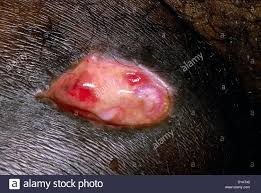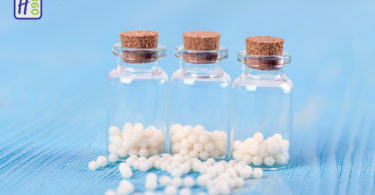Joint Crepitus and Homoeopathic medicines
Abstract: This article is an attempt of explaining different sounds produced in the joint cavity, its causes and clinical significance. The article will also explain the utility of Murphy’s and Kent’s repertory in treatment of Joint crepitus along with indications of commonly prescribed medicines.
Keywords: Crepitus, Cracking, Grating, Creaking, Therapeutics
Abbreviations:
: Amelioration
Introduction: -Crepitus is crackling or grating sound coming from any joint cavity. Sounds in joint by themselves don’t necessarily indicate pathology, it is benign in nature if it is not associated with any other symptom related to joints but if patient complain of pain, swelling, stiffness along with crepitus then one must find out underlying pathology. It can be caused by bones rubbing against each other or produced by soft tissues moving over bony prominence. Sometimes the crepitus may never go away and remain throughout life. Crepitus may vary from loud grinding noise to a squeaking noise. It can be detected by palpating the affected joint or by auscultation of joint (1).
Commonly involved joints: – Cervical Spine, Shoulder Joint, Knee joint, Ankle joint, Wrist joint, hip joint and Great toe (2).
Aetiology:-
1) Ageing process.
2) Prolonged immobility due to obvious causes.
3) Bone fracture or disturbances in bony contour.
4) Collection of air bubbles in subcutaneous tissues.
5) Two rough surfaces in organism’s body come into contact Ex. Osteoarthritis, Rheumatoid arthritis.
6) Erosion of cartilages around joints .(1)
Classification:-
1) Bone crepitus: – It is produced when two fragments of fracture are moved against each other.
2) Joint crepitus: – It is obtained when affected joint is passively moved with one hand, while other is placed on joint to feel crepitus.
3) Crepitus of bursitis: – It is heard when fluid in bursa contain small, loose, fibrous particles.
4) Soft and fine Crepitus: It indicates roughening of articular cartilage.
5) Coarse, grating crepitus: It indicates badly damaged articular cartilage or bone.
6) Creaking, Leathery crepitus: It is also known as Snowball crepitus indicates pathology related to tendons. The tendon may snap over one another or over a bony prominence to produce sound.
7) Loud, snapping, pain free crepitus: It indicates formation of gas bubbles in joint cavity. (1)
Characteristic features:
1) Crepitus in shoulder joint is fine or coarse in character. It is produced because of scapular exostosis or coracoid impingement.
2) Crepitus of Wrist joint are generally fine in character and needs to be auscultated by stethoscope. They can be produced because of tenosynovitis of extensor tendons, collie’s fracture, osteoarthritis of wrist joint etc.
3) Crepitus in ankle joint are generally fine in character and are produced by damage to articular surfaces.
4) Crepitus in hip joint are generally fine or coarse in character and are produced by osteoarthritis or fracture.
5) Crepitus in great toe are generally coarse in character and are produced by osteoarthritis (2)
Repertorisation:
1) Murphy’s repertory:
Chapter: Joints
Rubric: Cracking of joints
CAPS, LED, NIT-AC, PETR, RHUS-T, ant-c, calc, camph, cham, cocc, ferr, kali-bi, kali-c, kali-s, lyc, merc, nat-c, nat-m, nat-s, nux-v, phos, sabad, sep, sulph, thuja(3).
2) Kent’s repertory:
Chapter: Extremities
Rubrics: cracking joints in
Caps, Led, Nit-ac, Petr, Rhus-t, ant-c, calc, camph, cham, cocc, ferr, kali-bi, kali-c, kali-s, lyc, merc, nat-c ,nat-m, nat-s, nux-v, phos, sabad, sulph, thuja (4).
Homoeopathic therapeutics:
1) Capsicum: This medicine acts with great intensity on mucous membrane and bones. It is suitable to those persons who are of lax fibres, weak, lazy, indolent, fat and red. The patient is clumsy, awkward and has unclean habits. They are opposed to physical exertion, averse to go outside of their routine and get home sick easily. Their joints crack. Joints are stiff, painful on beginning to move, pain as if paralysed, pain from hips to heels < by coughing. Sciatica < by bending backwards and coughing. Left leg atrophied with violent pain. The patient staggers when walking (5).
2) Ledum palustre: This medicine is indicated in full blooded, plethoric, robust patients. It affects fibrous tissue of joints especially tendons of ankles and heel. This medicine is also called as rheumatic remedy. Rheumatism begins in feet and travels upwards, affected part becomes purple, puffy and then emaciate. The affected part is chilly yet there is aversion to external warmth. There is general lack of vital heat. The joint is painful, cold and oedematous (5).
3) Nitricum acidum: It is indicated in swelling of finger joints, painful tibia and patella which leads to impeding walking. There is weakness of ankles, which creaks while walking. Bones are painfully sore; there is pain as if flesh is torn out of bone. There are carries and exostosis of bones (5).
4) Petroleum: It is indicated in cracking joints, stiffness of joints, sensation as if limbs are going to sleep. There is stiffness of neck, it cracks when moved. Pain in spine and all over body with sciatica
5) Rhus toxicodendron: There is stiffness of neck with painful tension when moving. It affects the fibrous tissue, ligaments and joints causing rheumatic symptoms. Pain as if flesh is torn loose from the bone. There is dislocative sensation, muscles twitch, and there is crawling and numbness of extremities. There is swelling and inflammation of long bones, scraping, tearing in periosteum. Numbness of limbs, arms are nervous and shaky. Legs feel wooden and dead. Cramps in calf muscles, limbs are stiff, joints are hot and painful (5).
Conclusion: Joint Crepitus is considered as benign and insignificant for making the clinical diagnosis. Most often it gets neglected by patient as well as physicians if it is not associated with any other major complains like pain, swelling, stiffness etc. It is considered as a part and parcel of ageing process. Usually it gets under noticed till the person suffers from significant distress because of joint affection or joint Crepitus leads to social or occupational embarrassment to person. Almost all the joints in body can creak or can have Crepitus irrespective of their nature, function or location. Ayurvedic system of medicine considers Crepitus clinically significant even if it is not associated with major physical symptom, it is considered to be a manifestation of increase in “Vaat or Vayu” in the person’s body. After studying joint Crepitus from two basic repertories I came across various things that are mentioned in this article. Interested learners of homoeopathy can surely go ahead with utilisation of homoeopathic medicines in treatment of Crepitus.
References:
1) Magee David, Orthopaedic physical examination, 6th edition, Elsevier Publications, 2019, Pg. No. 18 and 64
2) Mcrae Ronald, Clinical Orthopaedic examination, 5th edition, Churchill livingstone publishers, 2004, Pg. No. 5
3) Murphy R, Homoeopathic medical repertory, 2nd revised edition, B. Jain publishers (P) ltd. New Delhi, 2004, Pg. No. 1070
4) Kent J.T., Repertory of homoeopathic materia medica and word index, Enriched Indian edition reprint from 6th American edition, B. Jain publishers (P) ltd. New Delhi, 2004, Pg. No. 970-971
5) Phatak S. R., Materia Medica of homoeopathic medicines, 2nd edition revised and enlarged, B. Jain publishers (P) ltd. New Delhi, 1999.





